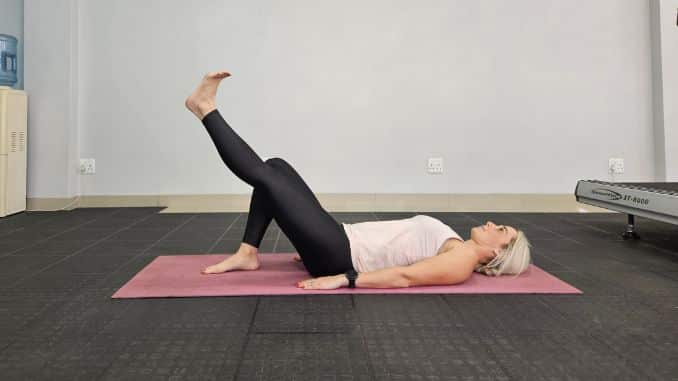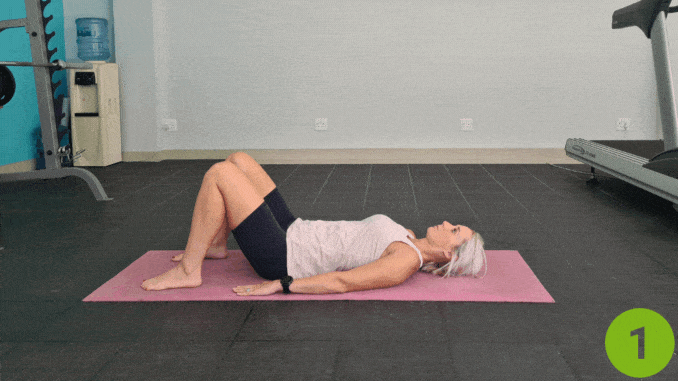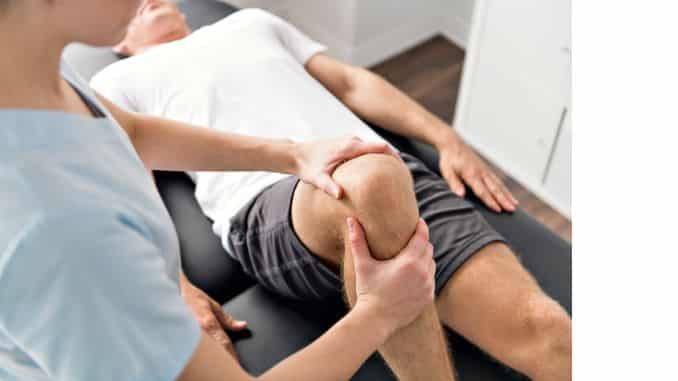If you’ve ever winced from a sudden twinge in your groin area during a workout, on the ice, or simply twisting the wrong way, you’re not alone. Groin strains account for a significant number of sports-related injuries, particularly in high-intensity movements such as sprinting, skating, or kicking. Whether you’re a hockey player, a gym-goer, or just someone trying to stay active, understanding how to manage a groin strain—and which groin strain [1] exercises to avoid—is crucial to recovery and prevention.
In this article, you’ll learn:
- Simple groin strain exercises that support healing
- Exercises to avoid with a groin strain
- How to manage your groin injury
- How to speed up recovery from a groin strain
- Expert tips from Julien Emery, a hockey pro turned sports performance coach
Dr. Ryan Nunley, an orthopedic surgeon at Washington University Orthopedics, emphasizes that groin pain is often misattributed solely to muscle strains. He notes that it can frequently stem from underlying hip joint issues such as labral tears, cartilage damage, hip impingement, or arthritis.
These conditions typically develop gradually without a specific injury and may present as a dull ache that intensifies when the hip is flexed, like during sitting or driving. Over time, individuals might experience stiffness and reduced hip mobility.
Dr. Nunley advises that persistent or worsening groin pain warrants evaluation by an orthopedic hip specialist to determine the appropriate treatment, which may range from physical therapy and anti-inflammatory medications to advanced interventions like hip arthroscopy or resurfacing.
Step-by-Step: Simple Groin Strain Exercises to Help Recovery
1. Supine Leg Raises

- Position: Lie on your back with your left leg straight and your right knee bent.
- Movement: Slowly lift your left leg toward the ceiling while keeping your toes pointed up.
- Reps: 2 sets of 10 reps per side.
Benefits: This mild or partial stretch targets the adductor muscles and helps restore normal movement in the groin muscles and hip joint.
2. Adductor Squeeze with a Ball

- Position: Sit or lie down with knees bent and feet flat.
- Movement: Place a soft ball between your knees and gently squeeze for 5 seconds.
- Reps: 10 repetitions.
Benefits: Strengthens inner thigh muscles and improves pelvic stability, which is essential for groin injury prevention.
3. Pelvic Tilt Bridges

- Position: Lie on your back with knees bent.
- Movement: Tilt your pelvis slightly and lift your hips, squeezing your core muscles.
- Reps: 2 sets of 12 repetitions.
Benefits: Strengthens core and lower abdominal muscles—key players in reducing groin pain and muscle weakness.
Groin Strain Exercises to Avoid
Not all exercises are helpful when dealing with a groin injury [2]. In fact, some can delay healing or even cause further injury.
Avoid These:
- Deep lunges or squats that overstretch the upper inner thigh and adductor muscles
- Lateral leg swings that involve fast, uncontrolled motion
- High-resistance adductor machines early in recovery
- Jumping or sprinting drills that demand sudden contraction of the groin area
- Stretching beyond the range of motion that pulls on weakened muscles or soft tissues
These movements can overstress the few muscle fibers trying to heal, especially in cases of a complete muscle tear or significant strain.
How to Manage Your Groin Strain Like a Pro?
Julien Emery, a seasoned hockey professional and strength coach in Vancouver, offers this core advice:
“The most important thing is to address the imbalances on the exercise side. People overfocus on core stability but overlook eccentric training for the groin.”
Key Takeaways from Julien:
- Groin strains often stem from imbalances between muscle groups—especially the adductors and hip flexors.
- Eccentric strengthening (muscle lengthening under tension) is essential, much like what’s done for hamstring rehabilitation.
- Exercises that mimic functional movement patterns like sprint braking and change of direction are vital in both recovery and groin injury prevention.
How to Speed Up Recovery from a Groin Strain?
To heal faster and avoid lingering pain and muscle weakness, follow these steps:
1. Early Rest and Protection
- Apply ice packs to the injury site for 10-15 minutes every few hours.
- Avoid painful movements and sudden twisting or turning.
2. Gradual Rehabilitation
- Introduce low-impact strengthening exercises after 48–72 hours of rest.
- Use techniques from sports physical therapy to support the recovery of the upper leg, abdominal organs, and groin area.

- A certified physical therapist can tailor a treatment program, monitor muscle strength tests, and guide you through proper hip stretch and abdominal pain relief techniques.
- According to the American Physical Therapy Association, early intervention and proper progression are key to restoring muscle function.
4. Restore Balance
- Strengthen the lower abdominal muscles and core.
- Address tightness in the pubic symphysis and pelvic growth plates to minimize pain and avoid an inguinal hernia or long-term groin pulls.
Pro Tips for Groin Injury Prevention
- Warm up thoroughly before workouts or games.
- Maintain good physical conditioning, especially in the core and thigh muscles.
- Practice correct lifting techniques to avoid straining your lower abdomen.
- Incorporate mobility and flexibility work for hip flexion and leg adduction.
- Monitor early signs of muscle spasms [3], tightness, or discomfort in the leg or groin area.
Final Thoughts: Don’t Ignore That Twinge
Groin strains occur when we least expect them, often from overuse, imbalance, or skipping essential warm-up steps. Listening to your body and respecting its limits is essential. As Julien Emery notes, strengthening the groin isn’t just about brute force—it’s about smart, targeted movement.
By avoiding harmful groin strain exercises and implementing safe, effective strengthening routines, you can ease groin pain, reduce the risk of further injury, and get back to the sports or activities you love—with confidence and control.
Struggling with SI joint pain? Discover effective tips and check out our Sacroiliac Pain Solution for lasting relief.
FAQ’s
What causes groin strains?
Sudden movements, overuse, or muscle imbalances—common in sports like hockey and soccer.
What are the symptoms?
Pain in the groin or inner thigh, swelling, limited range of motion, and muscle weakness.
Which exercises should I avoid?
Avoid deep lunges, squats, sprints, and high-resistance adductor exercises during recovery.
How can I speed up recovery?
Rest, apply ice, do gentle strengthening exercises, and follow a physical therapy plan.
How do I prevent future groin injuries?
Warm up, strengthen the core and adductors, stretch regularly, and avoid overtraining.


